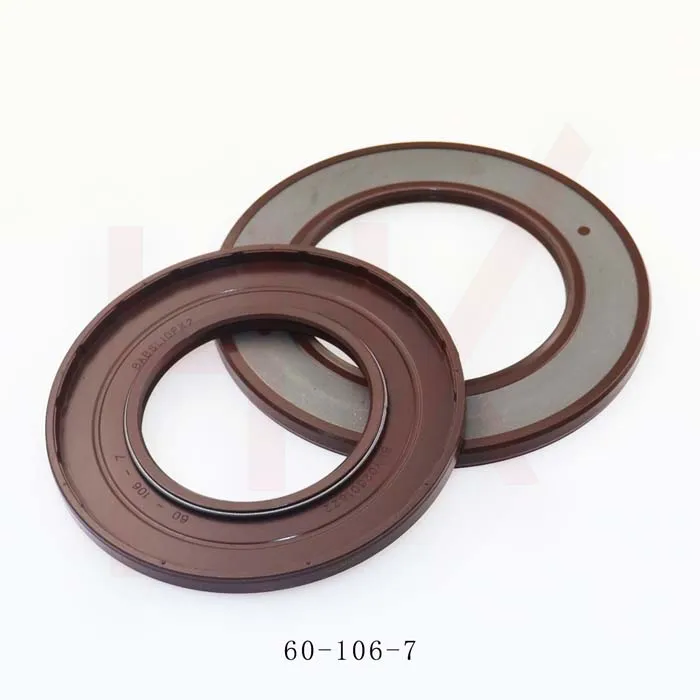elo . 21, 2024 18:22 Back to list
Hydraulic Seal Replacement Guide for Efficient Maintenance and Repairs
Hydraulic Seal Replacement A Comprehensive Guide
Hydraulic systems are essential in machinery used across various industries, from construction to manufacturing. A critical component of these systems is the hydraulic seal, which prevents fluid leaks and ensures efficient operation. However, seals can wear out over time due to exposure to high pressure, temperature fluctuations, and contaminants. Therefore, regular replacement of hydraulic seals is crucial for maintaining the performance and longevity of hydraulic machinery. This article will provide an overview of when to replace hydraulic seals, the process involved, and tips for ensuring a successful replacement.
When to Replace Hydraulic Seals
Recognizing the need for hydraulic seal replacement is vital. Common signs of seal deterioration include
1. Fluid Leaks The most obvious symptom of a failing hydraulic seal is the presence of fluid leaks around the cylinder or other components. If you notice a consistent drop in hydraulic fluid levels, it’s essential to inspect the seals.
2. Reduced Performance If your machinery is exhibiting reduced efficiency or slower response times, it could be due to failing seals that are allowing pressure loss.
3. Visible Wear Regular inspections should include looking for wear, cracks, or tears in seals. If you see any visible damage, it’s time to replace the seal.
4. Contamination In harsh environments, seals may become contaminated with dirt and debris, which can compromise their integrity. Regular cleaning and inspection can help prevent this.
The Replacement Process
Replacing hydraulic seals is a task that can be accomplished with the right tools and knowledge. Here’s a step-by-step guide to the process
1. Preparation Before starting, ensure the system is depressurized and drained of hydraulic fluid. Safety gear should be worn to protect against potential injuries.
2. Disassemble the Cylinder Carefully disassemble the hydraulic cylinder, taking note of the order of components for reassembly. Use appropriate tools to avoid damaging any part of the machinery.
hydraulic seal replacement

3. Remove Old Seals Once you have access to the seals, gently remove them using a seal puller or a similar tool. Ensure not to scratch or damage the seal grooves, as this can lead to new seals failing prematurely.
4. Clean the Surface Thoroughly clean the groove and surrounding areas to remove old seal material, dirt, and contaminants. A clean surface is crucial for proper sealing.
5. Install New Seals Lubricate the new seals with hydraulic fluid to facilitate installation. Carefully place the new seal into the groove, ensuring it is seated evenly without twisting or rolling.
6. Reassemble the Cylinder Once the new seals are in place, reassemble the cylinder in the reverse order of disassembly. Ensure all components are tightened to the manufacturer’s specifications.
7. Test the System After reassembly, slowly fill the system with hydraulic fluid and pressurize it without a load. Check for leaks and ensure that the system operates smoothly.
Tips for Successful Replacement
- Quality Matters Always choose high-quality seals that are compatible with your specific application. In many cases, it’s worth investing in original equipment manufacturer (OEM) parts to ensure compatibility and longevity.
- Follow Manufacturer Guidelines Each hydraulic system is different, so consult the manufacturer's manual for specific instructions and specifications.
- Regular Maintenance Incorporate seal inspection into your regular maintenance routine. This proactive approach can save both time and money in the long run.
- Training and Expertise If you’re unfamiliar with hydraulic systems, consider seeking assistance from a qualified technician. Proper training can significantly reduce the risk of errors during replacement.
In conclusion, understanding hydraulic seal replacement is essential for anyone working with hydraulic systems. Recognizing the signs of wear, following a careful replacement process, and adhering to maintenance guidelines can enhance the efficiency and longevity of your equipment, ultimately saving costs and reducing downtime.
-
TCN Oil Seal Metal Ring Reinforcement for Heavy Machinery
NewsJul.25,2025
-
Rotary Lip Seal Spring-Loaded Design for High-Speed Applications
NewsJul.25,2025
-
Hydraulic Cylinder Seals Polyurethane Material for High-Impact Jobs
NewsJul.25,2025
-
High Pressure Oil Seal Polyurethane Coating Wear Resistance
NewsJul.25,2025
-
Dust Proof Seal Double Lip Design for Construction Equipment
NewsJul.25,2025
-
Hub Seal Polyurethane Wear Resistance in Agricultural Vehicles
NewsJul.25,2025
-
The Trans-formative Journey of Wheel Hub Oil Seals
NewsJun.06,2025
Products categories
















